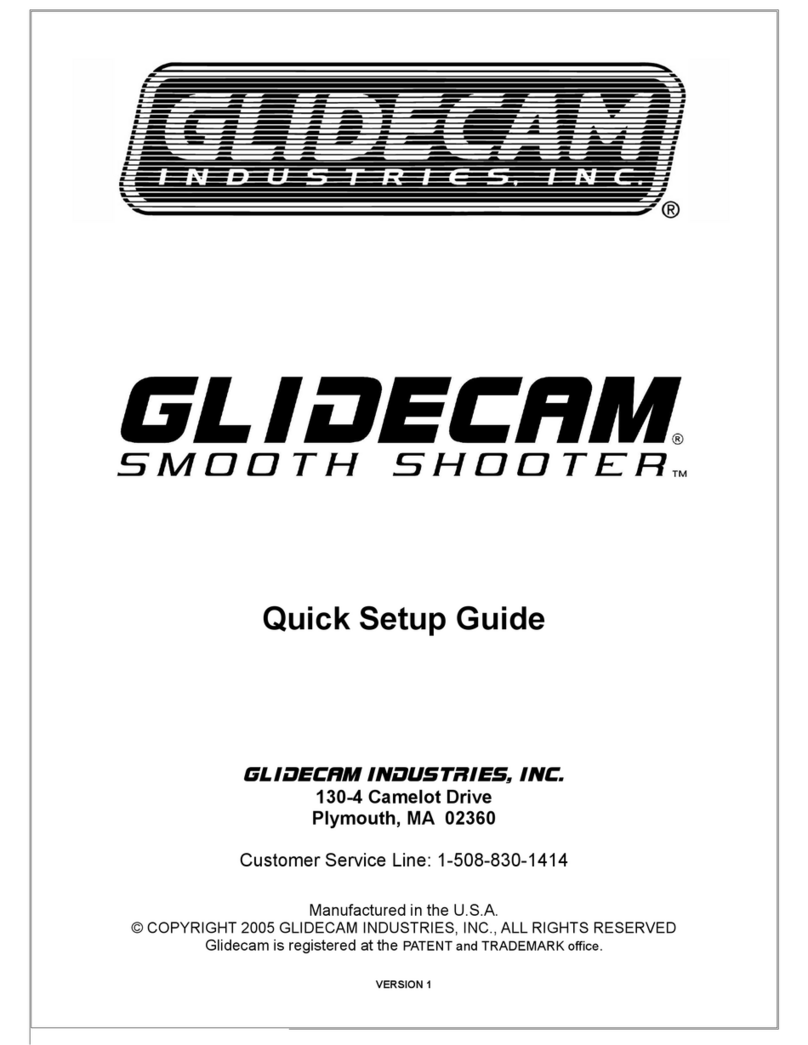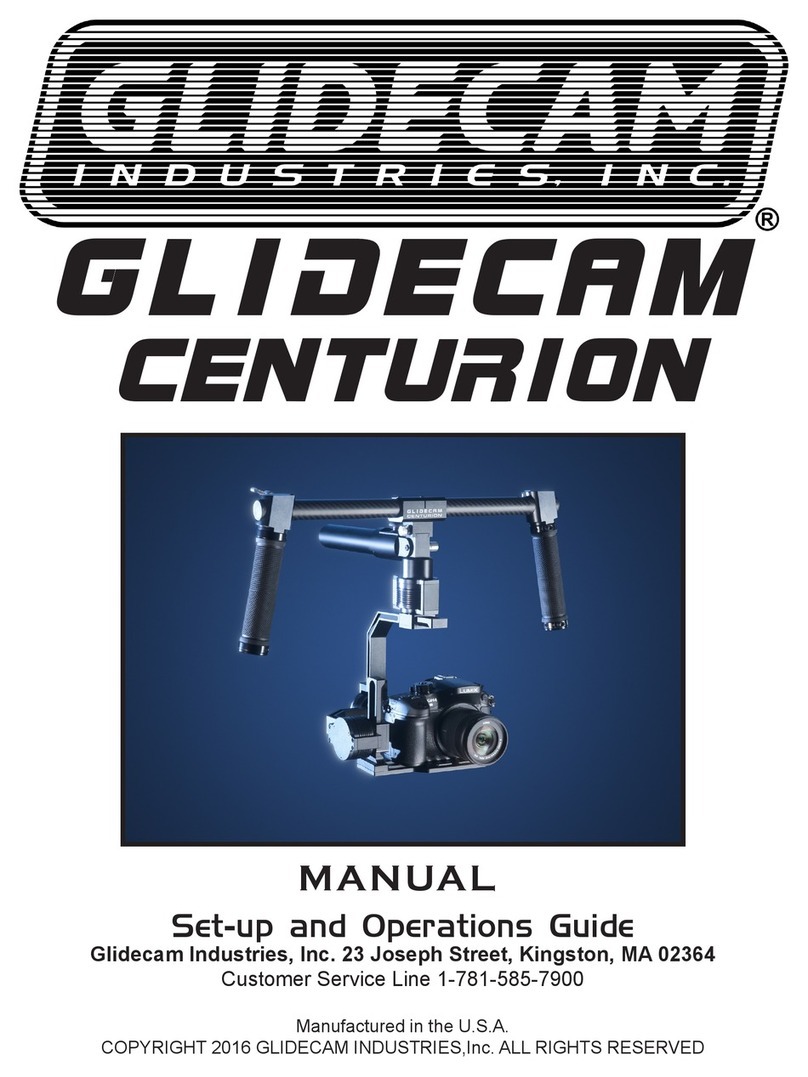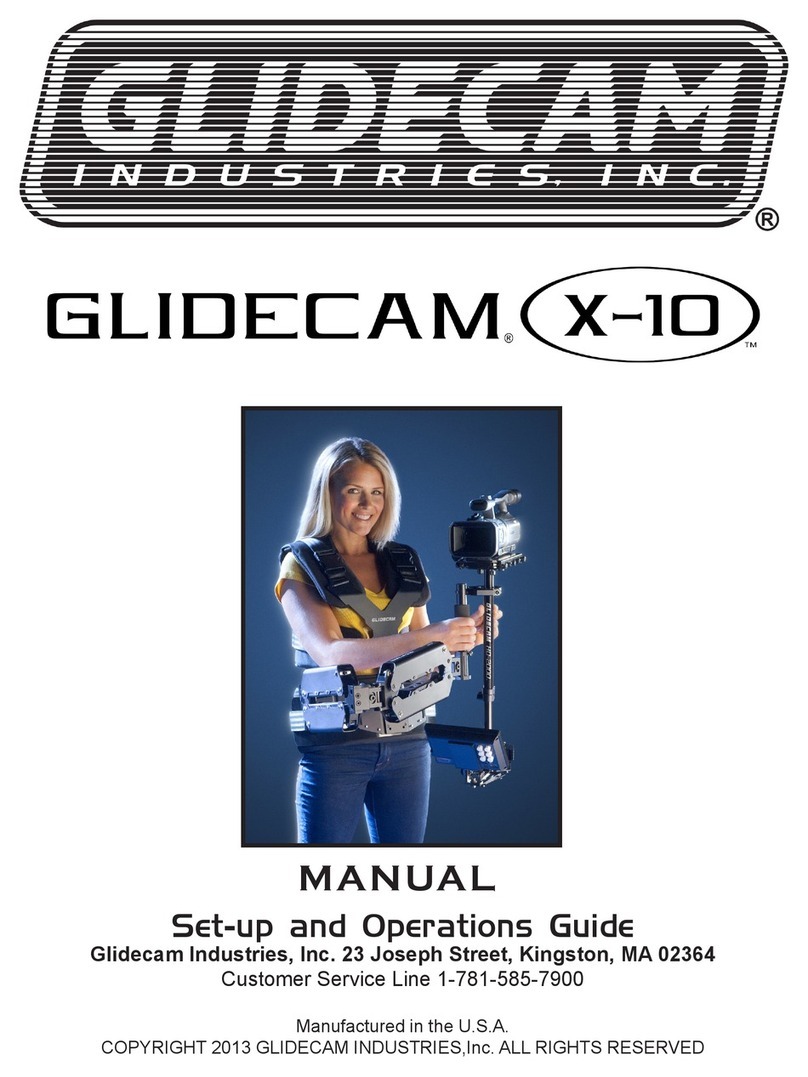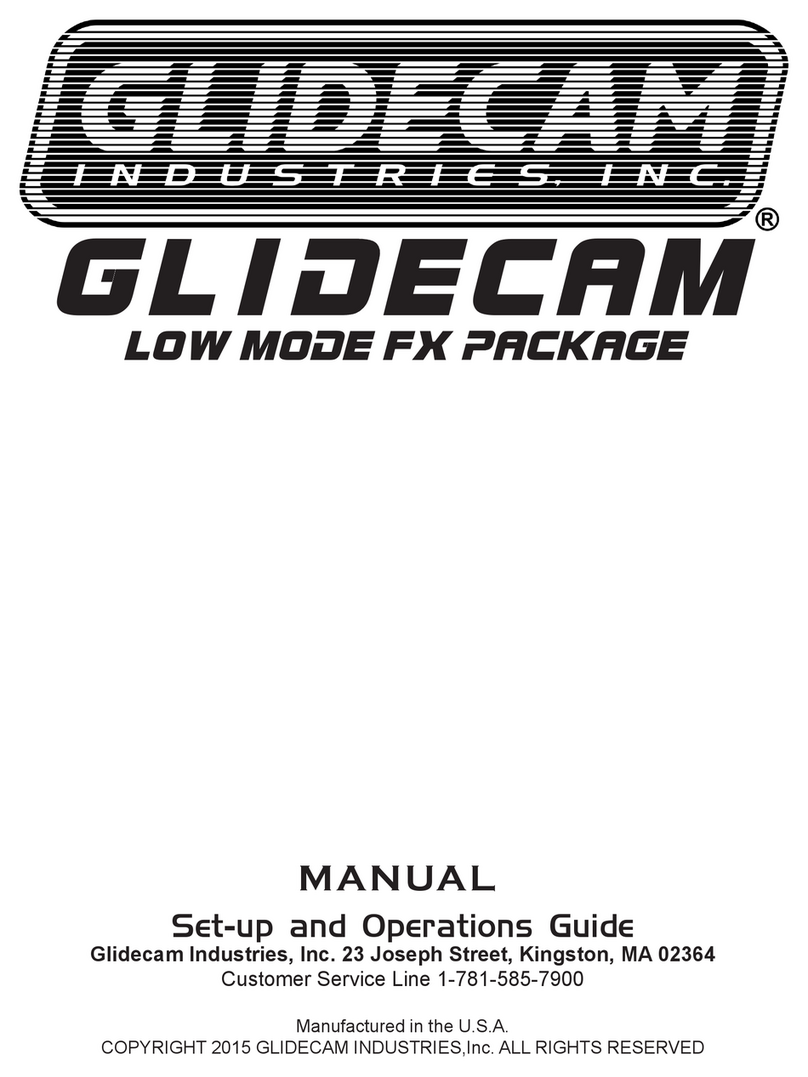
Congratulations on your purchase of a Glidecam XR-1000, XR-2000 or XR-4000.
The Glidecam XR-SERIES is a lightweight, aluminum, hand-held camcorder
stabilizing system designed to allow you to walk, run, go up and down stairs and travel
over rugged terrain without any camera instability or shake. When used correctly
the Glidecam XR-SERIES can move with such uidity and grace as to be virtually
indistinguishable from shots made by professional dollies, cranes and stabilizers.
The Glidecam XR-SERIES is the most versatile and dynamic of all the consumer
camcorder stabilizers on the market. It can shoot straight up and down, or even
sideways and still produce stable images.
Fluid tilts and pans, crane-like booms, dolly-type maneuvers, and the ability to shoot
smooth shots from moving vehicles are all easily accomplished with the Glidecam
XR-SERIES. The offset gimbaled handle-grip and enclosed bearing assembly allow
your hand to move freely in several directions, while the horizontal yoke allows your
hand and arm to move up and down, alleviating the bouncing, pogo-type action
often associated with our competitors’ systems. The upper camera platform moves
back and forth, and side to side to quickly allow the balancing of your camera in
relationship to the counterweights. By varying the amount of counterweight disks on
the base platform, the Glidecam XR-SERIES can support any camcorder weighing
up to 3 pounds (XR-1000) six pounds (XR-2000) and 4 to 10 pound (XR- 4000).
While the Glidecam XR-SERIES is in essence a very simple device, its simplicity
doesn’t lend ease in answering that often asked question, “how does it work?” To
answer this question completely would require delving into Newtonian Physics. We
would have to explain - center of gravity displacement, inertia, friction and angular
motion reduction etc. However, a quick answer reveals the Glidecam XRSERIES
works by isolating your hand and arm’s motions from your camera, while your camera
is balanced in a relatively motionless state.
The Glidecam XR-SERIES requires practice and understanding to achieve
professional looking results. We highly recommend that the user read this manual
thoroughly before setting up and operating the Glidecam XR-SERIES. Doing so
will save you time, and will minimize the risk of damage to your camcorder or the
Glidecam XR-SERIES. It is important to perform and follow the Set-up and Operation’s
procedures in the proper sequence, so as to avoid both frustration and a possible
accident.
If you have need of any technical assistance, you can call our Technical Support
Line at 1-781-585-7900, Monday through Friday between the hours of 9:00 am and
5:00 pm, Eastern Time.
We’re sure that once you have your Glidecam XR-SERIES up and running, you will
nd years of enjoyment with it.
#1 INTRODUCTION
3
































